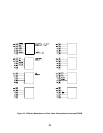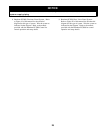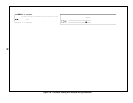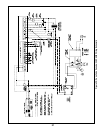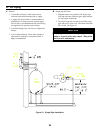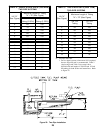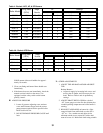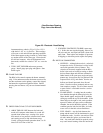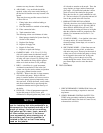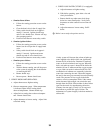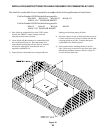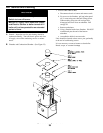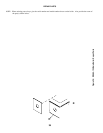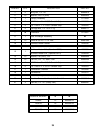32
instrumentation to obtain a CO
2
of 11.5 to 12.5%
with draft of -.02” w.c. in fire box. These settings
will assure a safe and efficient operating condition.
If the flame appears stringy instead of a solid flame,
try another nozzle of the same type. Flame should
be solid and compact. After all adjustments have
been made, recheck for a draft of -.02” w.c. over the
fire.
4. TURN “OFF” BURNER and remove pressure
gauge. Install gauge port plug and tighten. Start
burner again.
M. FLAME FAILURE
The RSA boiler controls operate the burner automati-
cally. If for unknown reasons the burner ceases to fire
and the rest button on the primary control has tripped,
the burner has experienced ignition failure. Before
pressing the rest button, call your serviceman immedi-
ately.
N. CHECK FOR CLEAN CUT OFF OF BURNER
1. AIR IN THE OIL LINE between fuel unit and
nozzle will compress when burner is on and will
expand when burner stops, causing oil to squirt
from nozzle at low pressure as burner slows down
and causing nozzle to drip after burner stops.
Usually cycling the burner operation about 5 to 10
times will rid oil line of this air.
2. IF NOZZLE CONTINUES TO DRIP, repeat step
N.1. If this does not stop the dripping, remove cut
off valve and seat, and wipe both with a clean cloth
until clean. Then replace and readjust oil pressure.
If dripping or after burn persist replace fuel pump.
O. HINTS ON COMBUSTION
a. NOZZLES— Although the nozzle is a relatively
inexpensive device, its function is critical to the
successful operation of the oil burner. The
selection of the nozzle supplied with the RSA
boiler is the result of extensive testing to obtain
the best flame shape and efficient combustion.
Other brands of the same spray angle and spray
pattern may be used but may not perform at the
expected level of CO
2
and smoke. Nozzles are
delicate and should protected from dirt and
abuse. Nozzles are mass produced and can vary
from sample to sample. For all of those reasons
a spare nozzle is a desirable item for a service-
man to carry.
b. FLAME SHAPE — Looking into the combus-
tion chamber through the flame plug hole, the
flame should appear straight with no sparklers
rolling up toward the top of the chamber. If the
flame drags to the right or left, sends sparklers
upward or makes wet spots on the combustion
chamber, the nozzle should be replaced. If the
condition persists look for fuel leaks, air leaks,
water or dirt in the fuel as described below.
c. FUEL LEAKS— Any fuel leak between the
pump and the nozzle will be detrimental to good
combustion results. Look for wet surfaces in the
air tube, under the ignitor, and around the air
inlet. Any such leaks should be repaired as they
may cause erratic burning of the fuel and in the
Figure 23: Electrode / Head Setting
(Non-Burnham Drawing
Copy from other Manual)



